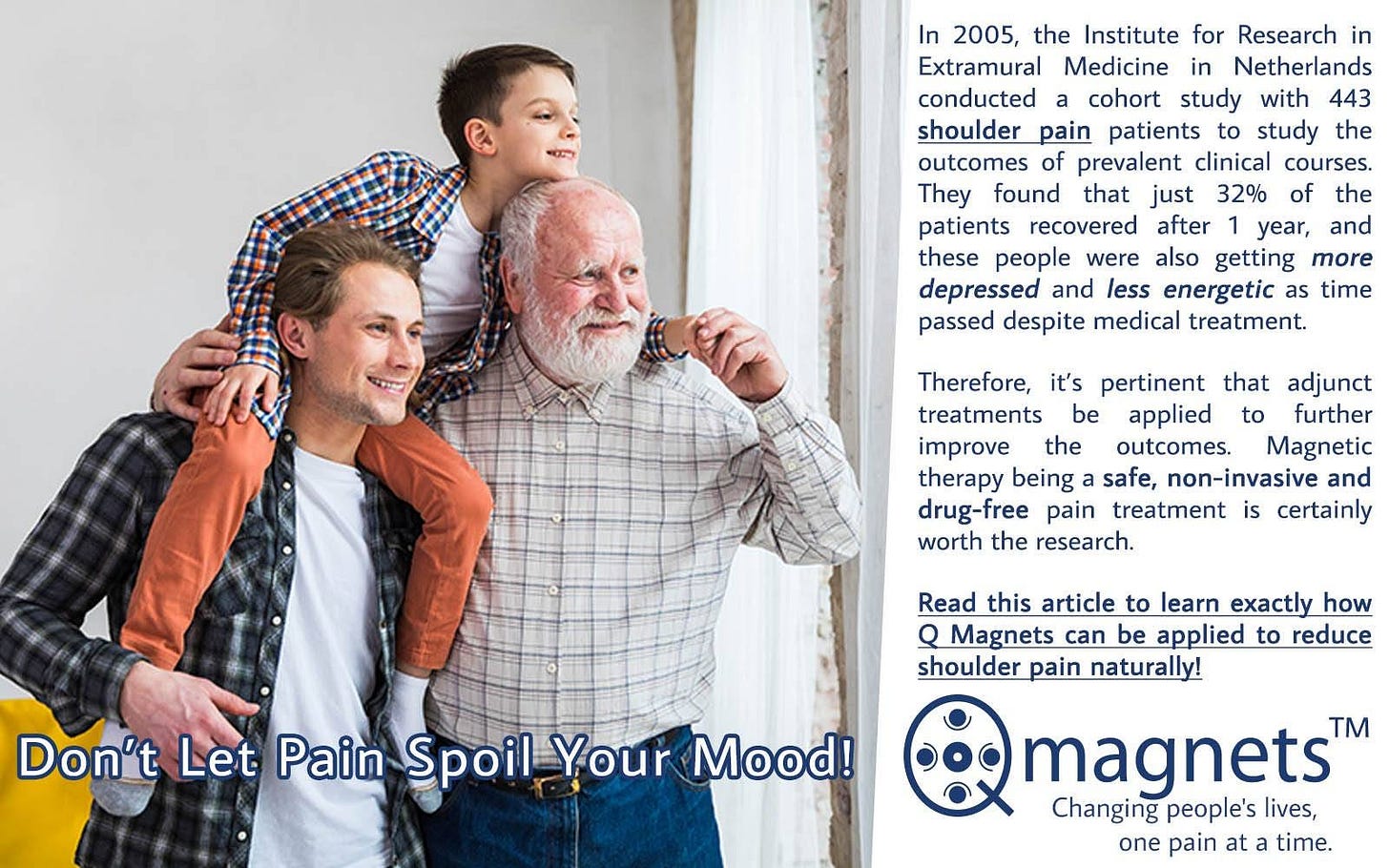MAGNABLOG: BioMagnetic Therapy in the 21st Century; Q Magnets for Equines; Magnetic Therapy Research and More!
Hello there!
Magnetic therapy which simply means using magnets as a therapeutic tool has been used for centuries in almost every culture around the world. Multipolar magnetic field therapy is a recent innovation that utilizes Quadrapolar, Hexapolar and Octapolar among other arrangements, i.e, multipolar magnets for pain management.
Dating as far back as 3 BC, Greek physicians were known to study and apply magnets therapeutically. In Ayurveda and Chinese medicine too, magnets have their place as a healing technology. In 16th century England, Queen Elizabeth I’s physician, William Gilbert also researched magnetism in depth.
In modern science, magnetic therapy has been under research and development since the last few decades as well. Being a non-invasive and inexpensive treatment, it has largely escaped the wider adoption as the medical industry focused largely on compounds while the alternative medicine industry worked steadfastly on herbals. However, there has been some encouraging research on magnetic field therapy in recent times which warrants further clinical investigation.
As it turns out magnetism is a highly complex area of research. Therapeutic magnets have several characteristics such as material, polarity and area of effect. The material and size of the magnets generally determine how strong the magnet is and how far its field penetrates, with rare-earth neodymium magnets being the strongest and most popular in magnetic therapy protocols today. Most traditional biomagnetism practitioners today use such magnets having simple bipolar (N-S) magnets.
And now, there is new research and innovation with multipolar magnets, which involves magnets that have multiple poles on the same side. Research shows that such magnets have an immediate effect on the pain firing nerves. In 1991, Dr. McLean from Vanderbilt University published a foundational study on the effects of static magnetic fields on sensory neurons, comparing the common bipolar magnets with multipolar magnets including the Quadrapolar array. He found that Quadrapolar magnets block action potential firing of a dorsal root ganglion, while the common bipolar magnet has no effect.
More recently in 2008, Dr. Agatha Colbert has been instrumental in reviewing magnetic therapy research. In her article from 2008 published in the Journal of Alternative and Complementary Medicine, she concludes that dosimetry has a huge role to play in the effectiveness of magnetic field therapy. What is dosimetry in magnetic therapy? Simply put, you need a large enough magnet to cover the area of treatment or acupoints, the field should be able to reach the nerve and have a magnetic field gradient that affects the nerves or tissues in the way needed.
Several clinical trials have shown benefits by applying static magnetic field therapy. Magnetic mattress pads, bipolar magnets and multipolar magnets have been studied in such trials. The multipolar technology seems to be consistently providing positive results and therefore can be considered one of the most effective magnetic field therapy tech for natural pain relief.
With such encouraging and break-through results where a low-cost device almost instantly reduces aches and pain, non-invasively and safely, it becomes an exciting pain relief technology today. Physiotherapists, acupuncturists, chiropractors and rehabilitation providers can certainly explore this body of research and find a natural pain management solution that can benefit their patients.
I hope you find our developments as exciting as we do and take the time to try them. All our products ship with a 30-day satisfaction guarantee and can be returned if not satisfied for any reason. There is a 99% statistical chance (based on our return rate) that Q Magnets work well for you. The Complex Back Pain Set or the Q Blankets are a great choice to start exploring our tech.
Please feel free to write to us if you have any questions, we look forward to serving you well. Practitioner and distributor inquiries are welcome!
Best wishes,
James Hermans
Managing Director & Co-Founder @ Q Magnets
Q Magnets for Navicular Disease in Equines
Q Magnets are a great tool for Equine Vets! Read this Case study from 2002 by Q magnets co-founder Dianne Hermans on Q Magnets for Pain Relief from Navicular Disease in Equines.
What’s more? The same magnets can help the riders beat pain! Whiplash pain relief with Q Magnets study to learn more.
Is there any difference in using the north or south pole of a magnet?
Yes! The question is irrelevant when it comes to multipolar magnets.
Introduction to Magnetic Therapy
This article, covers the basics of magnetic therapy and will assist readers to understand what kind of magnetic therapy is the most effective. If you’re a home user, you’ll get a fair idea of how to assess magnetic therapy products and get a better understanding of magnetic therapy. Professionals will get an in-depth insight into how it works and what are the current advancements in magnetic field therapy.
“Saving the liver from lots of pain medication after thoracic back pain..”
Shoulder Pain Treatment with Q Magnets
New Article in the Medical Acupuncture Journal on Static Multipolar Magnets
Q Blankets
Our newest innovation brings state-of-art therapeutic magnets to your bed or to use as a magnetic mattress pad or a blanket/throw-over for maximum comfort and rapid recovery effects.
The Q Magnets magnetic blankets have 13, 28 or 35 (depending on the size you choose) of some of our most powerful magnets (Q28-3), designed to stimulate regeneration, reduce stress and provide immense and immediate pain relief.
Many thanks,
Q magnets









